The arrival of American jazz in the Philippines in the 1920s was a pivotal moment in the country's music history. American servicemen and musicians like Teddy Weatherford introduced jazz to the Philippines. This exposure led to the fusion of American and Filipino styles, exemplified by Luis Borromeo's work in "bodabil," a unique blend of jazz and traditional Filipino music.
Several Filipino artists experimented with jazz, incorporating it into their music. Katy de la Cruz and Angel Peña successfully blended jazz with Filipino folk music, creating distinctive sounds. The vibrant jazz scene in Manila, with its numerous hotel ballrooms and cabarets, provided a thriving environment for this cultural fusion to flourish.
The impact of American jazz on Filipino music was profound and far-reaching. The fusion of jazz and Filipino styles spread throughout Southeast Asia****, leaving a lasting legacy. Today, the effects of this cultural exchange continue to be felt, with a deeper understanding of its significance still emerging.
Arrival of Jazz in the Philippines
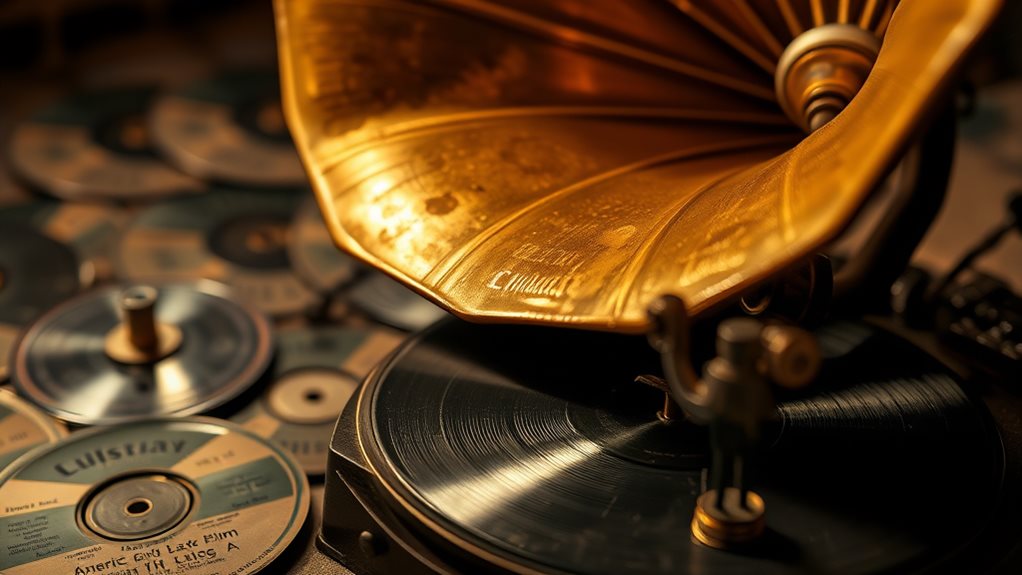
Jazz music arrived in the Philippines through American influence in the 1910s and 1920s**. This was made possible by African American musicians and the exposure to American popular music. The arrival of jazz wasn't a single event, but a gradual process of cultural exchange**.
Passenger liners played a key role in introducing jazz to the Philippines. American ballads, blues, and ragtime were introduced to Filipinos through these liners, laying the groundwork for a more profound interaction with jazz origins.
Teddy Weatherford, a renowned stride pianist, significantly popularized jazz across Asia, including the Philippines.
Filipino musicians actively contributed to the spread of jazz. Musicians like Angel Peña and Bert del Rosario blended their own musical traditions with the sounds of jazz. This wasn't a passive reception, as Filipino musicians were instrumental in spreading jazz throughout Asia.
Jazz performances took place in various venues. International hotels and ballrooms provided sophisticated settings, while bodabil shows and town fiestas offered a more informal atmosphere.
The rise of dedicated jazz cabarets and nightclubs in Manila and other Asian capitals further solidified jazz's place within the region's entertainment landscape.
Filipino orchestras also helped spread jazz to other regions. By performing on Pacific Ocean liners, these orchestras were able to introduce jazz to other parts of the world, further solidifying its global presence.
The King of Jazz: Luis Borromeo
Luis Borromeo was a pivotal figure in the widespread dissemination of jazz throughout the Philippines. He successfully integrated jazz into the local entertainment circuit by forming a band and performing in various venues.
Borromeo, a Cebu native, gained acclaim in American and Canadian jazz halls in the early 20th century before returning to the Philippines in 1920. Upon his return, he renamed himself Borromeo Lou and formed a band that would eventually become a repertory company. This company, "Borromeo Lou & Co., Ltd.," included magicians, dancers, acrobats, comedians, singers, and musicians.
Borromeo's Innovations was a unique blend of American and Filipino entertainment. He introduced "bodabil," a Filipinized vaudeville, captivating audiences with high-energy jazz performances. His shows featured a diverse cast, including Miss Toytoy, Datu Mandi, and the Japanese Twins Hayoki and Maruki San. This blend of cultures and talents showcased the fusion of American and Filipino entertainment.
Borromeo's impact extended beyond musical performance. He played a crucial role in shaping national consciousness through his performances at high society functions. His jazz collaborations weren't limited to musicians; he featured a diverse cast in his shows, including magicians, dancers, acrobats, comedians, singers, and musicians.
| Aspect | Detail | Significance |
|---|---|---|
| Early Career | American success in the early 20th century | Laid the groundwork for his Philippine fame. |
| Borromeo's Innovations | Filipinized Vaudeville ("Bodabil") | Unique blend of American and Filipino entertainment. |
| Jazz Collaborations | Diverse cast in his shows | Showcased a fusion of cultures and talents. |
| Impact on Society | High society events and social commentary | Elevated jazz's status in Philippine society. |
| Legacy | "King of Jazz" title | Solidified his place in Filipino musical history. |
Borromeo's legacy is about cultural fusion, entertainment entrepreneurship, and his significant role in shaping Filipino identity through popular culture. His influence resonates even today.
Other Key Filipino Jazz Figures
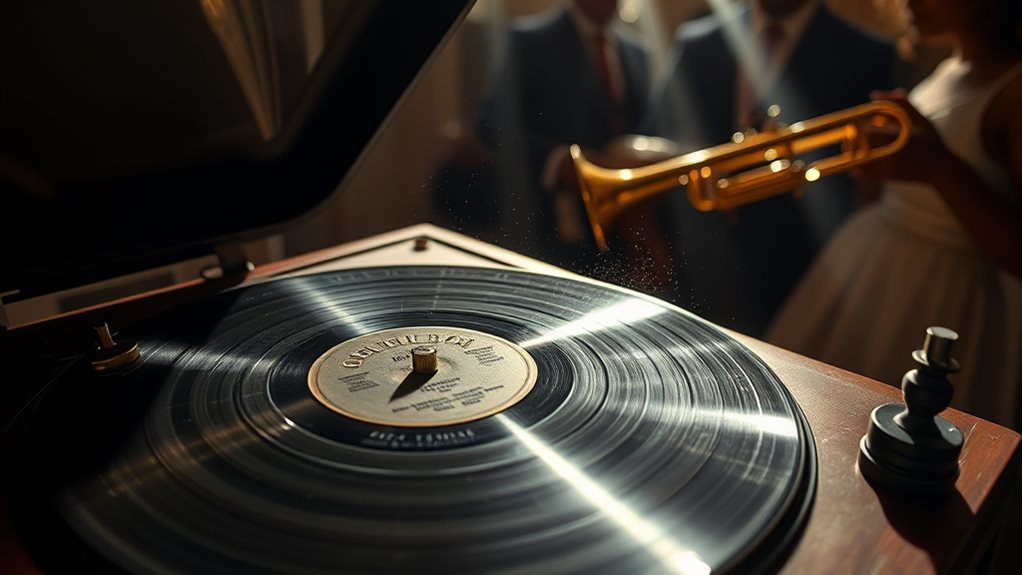
Beyond Luis Borromeo, other Filipino musicians significantly shaped the nation's jazz landscape and its global reach. Katy de la Cruz, known as the "Queen of Filipino Jazz," was renowned for her powerful renditions of classics like "St. Louis Blues" that captivated audiences. Her legacy continues through "Katy the Musical," a testament to her impact on bodabil and jazz.
Filipino musicians also made a significant impact abroad. In India, musicians like Nick Ampier, Mervyn Francisco, and Ivan Evangelista contributed to the Indian jazz scene during the 1920s and beyond, making notable collaborations with local artists. Their participation showcases the far-reaching influence of Filipino musicians.
In the Philippines, pioneering figures like Angel Peña experimented with jazz fusion, blending Filipino folk elements into their improvisations. This innovative spirit continued with later musicians like Eddie Munji and Ryan Cayabyab**. The inclusion of female improvisers like Katy de la Cruz** highlights the diverse contributions within Filipino jazz.
Other notable Filipino jazz musicians include Bob Aves, known for his ethno-infused style, and the Radioactive Sago Project, known for their spoken-word fusions. These musicians further diversified the unique musical landscape of the Philippines.
Filipino jazz musicians weren't confined to the Philippines; their influence extended to Thailand, Shanghai, and beyond. Mon David's success in the London International Jazz Competition cemented this global recognition.
Popular Jazz Performance Spaces
Filipino jazz musicians significantly impacted the development of vibrant jazz scenes in various Asian urban centers. These musicians performed in hotel ballrooms of international hotels in Shanghai, Manila, and other Asian port cities. The ballrooms, often lavish spaces, attracted middle- and upper-class audiences who enjoyed both the music and associated dances.
The cabaret culture in Shanghai, in particular, boasted a higher concentration of jazz performance spaces than anywhere else in Asia during the 1920s-1940s. These venues included large dance halls and smaller, intimate clubs that accommodated both local and foreign musicians, fueling the exchange of musical ideas.
Vaudeville and variety shows also featured Filipino musicians, who blended different styles to create a unique sound. Luis Borromeo's innovative approach, combining vaudeville with classical and Filipino folk music, showcased the versatility of jazz. These acts, prevalent in Manila and Cebu, helped establish a Filipino style of popular art, incorporating music, dance, and theater.
Port cities like Manila, Tokyo, and Bombay served as crucial hubs for the distribution of jazz across Asia. These locations facilitated the exchange of musical influences, allowing Filipino jazz bands to share their talents with audiences worldwide.
The presence of Westerners in these ports created consistent demand, solidifying the importance of these spaces in the evolution of Filipino jazz.
Manila's Jazz Scene

Manila's jazz scene flourished during the American colonial period and beyond. Local talent and international influences drove this growth. One notable figure was Ping Joaquin, known as the "King of Jazz Piano," whose band played on Pacific liners, introducing Manila's improvisational style to Asia. Federico Elizalde, a Filipino-Spanish bandleader, led influential big bands that showcased sophisticated jazz collaborations.
Nemesio Regalado, Pidong Alava, and Narding Aristorenas also contributed significantly to the scene's vibrancy during its golden age. These musicians were part of a network that extended beyond Manila. Initially, local bands covered American and European works, but by the early 1950s, Filipino folk elements were incorporated into jazz music. A notable example of this fusion is Angel Pena's groundbreaking "Igorot Jazz Fantasy."
The bodabil company, led by Luis Borromeo, played a key role in popularizing jazz and laying the foundation for later innovations. The University of the Philippines' Upsilon Sigma Phi fraternity organized early experimental jazz concerts, demonstrating a commitment to the genre's development.
Bodabil theaters, department stores, and shopping streets provided performance spaces**. The rise of events like "Jazz I" in 1956 officially marked the emergence of "Pinoy Jazz," solidifying the genre's local identity through original compositions**. International exposure through collaborations and performances on passenger liners also helped shape Manila's distinctive jazz sound.
Dance and Jazz Culture
Manila's American Jazz Influence Extended Beyond Music
The introduction of American jazz in Manila led to the development of a vibrant dance culture. Two popular dance styles that emerged during this period were ragtime and the foxtrot****. These styles were quickly adopted and adapted by locals, resulting in the creation of Filipino foxtrot and tango-foxtrot variations.
The Role of Filipino Composers in Shaping Dance Culture
Filipino composers, such as Francisco Santiago and Jose Estella****, played a significant role in shaping the dance culture by creating local adaptations of international dance styles. Their compositions showcased the unique blend of American jazz and Filipino music.
Additionally, Luis Borromeo's performances blended vaudeville and classical music, further highlighting the cultural fusions of the time.
The Diffusion of Dance Crazes in Manila
These dance crazes weren't limited to elite circles. They spread to various locations, including:
- International hotels and ballrooms that hosted local and international dance performances.
- Jazz cabarets and nightclubs that emerged as hubs for the dissemination of these dances.
- Department stores, such as those along Escolta in Manila, which promoted "Filipino Dance Records," indicating the commercial success and widespread popularity of these dance adaptations.
The Impact of Jazz Dances on Filipino Society
The popularity of these dance styles reflected the creativity and adaptability of Filipino musicians and dancers. The creation of hybrid genres, such as the Himno One-Step, demonstrated the innovative cultural fusions of the time.
The rapid uptake of jazz dances by the general public underscored their popularity and integration into Filipino society. The presence of these dances in carnivals and tours across Southeast Asia displayed the expanding reach of this uniquely Filipino interpretation of American jazz culture.
American Jazz Musicians' Impact
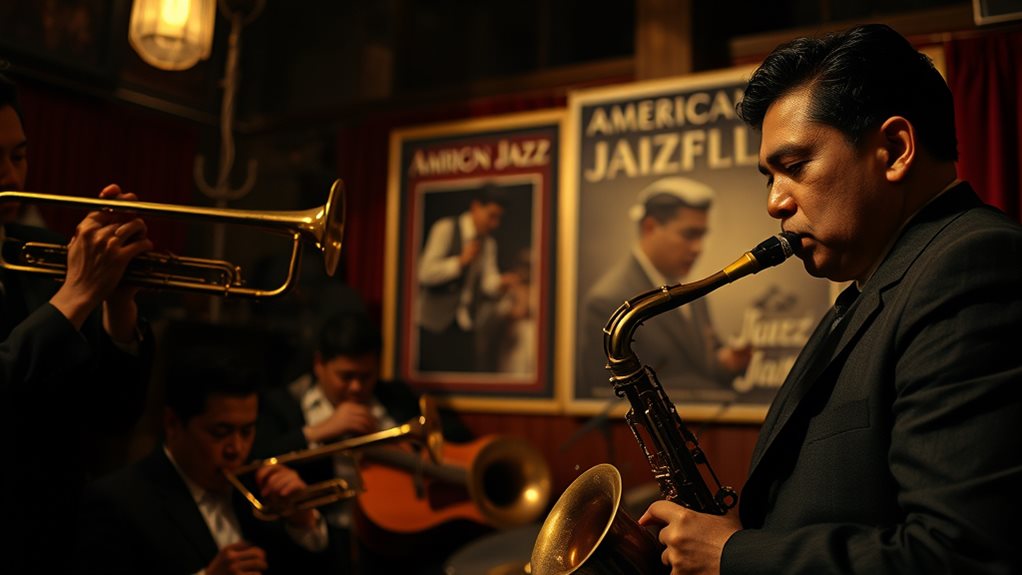
The Introduction of American Jazz in the Philippines
The arrival of American jazz in the Philippines, facilitated by the American occupation, led to a dynamic interaction between American musicians and the local music scene. This interaction resulted in a vibrant cultural exchange where American jazz musicians performed in hotels and nightclubs, increasing the popularity of jazz records. Filipino musicians didn't just imitate American jazz; they actively integrated jazz elements into their existing styles, creating unique blends.
Evolution of Filipino Music
The integration of jazz into Filipino music led to a fascinating evolution. Luis Borromeo masterfully fused jazz with vaudeville and classical influences, resulting in hits like "Jazzy Jazzy Sound in Old Chinatown." Similarly, composers like Francisco Santiago and Jose Estella incorporated jazz into their compositions, modernizing the Filipino musical landscape. This blending of styles wasn't limited to studio work; it also manifested itself on stage.
Key Filipino Musicians and Their Contributions
Several Filipino musicians played a crucial role in shaping the country's jazz scene. Luis Borromeo was a pioneering figure of Filipino jazz, known for his hits like "Jazzy Jazzy Sound" and "My Beautiful Philippines." Francisco Santiago and Jose Estella also made significant contributions by incorporating jazz elements into traditional Filipino music. Angel Peña further blended local and American styles in the 1950s, creating a unique fusion of Filipino folk and jazz.
The Rise of Filipino Dance Styles
The influence of American jazz rhythms also led to the rise of uniquely Filipino dance styles. The "himno one-step" and "Filipino foxtrot" were directly influenced by American jazz rhythms. Filipino jazz musicians toured Southeast Asia, spreading their blended style and showcasing the impact of early jazz collaborations.
Key Style Integrations and Their Impact
| Filipino Musician | Style Integration | Impact | Key Works/Performances |
|---|---|---|---|
| Luis Borromeo | Jazz, Vaudeville, Classical | Pioneering figure of Filipino jazz | "Jazzy Jazzy Sound," "My Beautiful Philippines" |
| Francisco Santiago | Jazz elements into traditional Filipino music | Modernization of Filipino musical landscape | Various compositions incorporating jazz elements |
| Jose Estella | Jazz elements into traditional Filipino music | Modernization of Filipino musical landscape | Various compositions incorporating jazz elements |
| Angel Peña | Filipino folk with jazz in the 1950s | Further blending of local and American styles | Works from the 1950s showcasing jazz fusion |
Teddy Weatherford's Influence
Jazz's popularity in the Philippines was largely influenced by American occupation and American musicians' performances. This impact, however, wasn't limited to direct American presence. The influence of jazz extended beyond the Philippines, and Teddy Weatherford played a significant role in Asian jazz integration.
Weatherford began his journey in New Orleans and eventually made his way to Asia, shaping the region's musical landscape. His influence can be seen in both his performances and mentorship. Weatherford's unique style, a blend of stride piano reminiscent of Fats Waller, resonated across Asia.
After leaving the US in 1926, Weatherford became a central figure in Shanghai's jazz scene. He made significant contributions to Asian jazz, including:
- Recruiting American musicians, like Buck Clayton and his Harlem Gentlemen, to bring American jazz styles to Asia.
- Educating local musicians in Japan and India, laying the groundwork for future Asian jazz artists.
- Performing in high-profile venues across Asia, exposing diverse audiences to American jazz.
Weatherford's impact goes beyond his performances; he played a crucial role as a cultural ambassador and educator.
Although he didn't directly influence the Filipino jazz scene, his contributions to Asian jazz integration provided a crucial link in the spread and development of the genre. Weatherford's legacy is one of cross-cultural exchange, significantly impacting the trajectory of jazz in Asia.
Blending Filipino and Jazz Styles
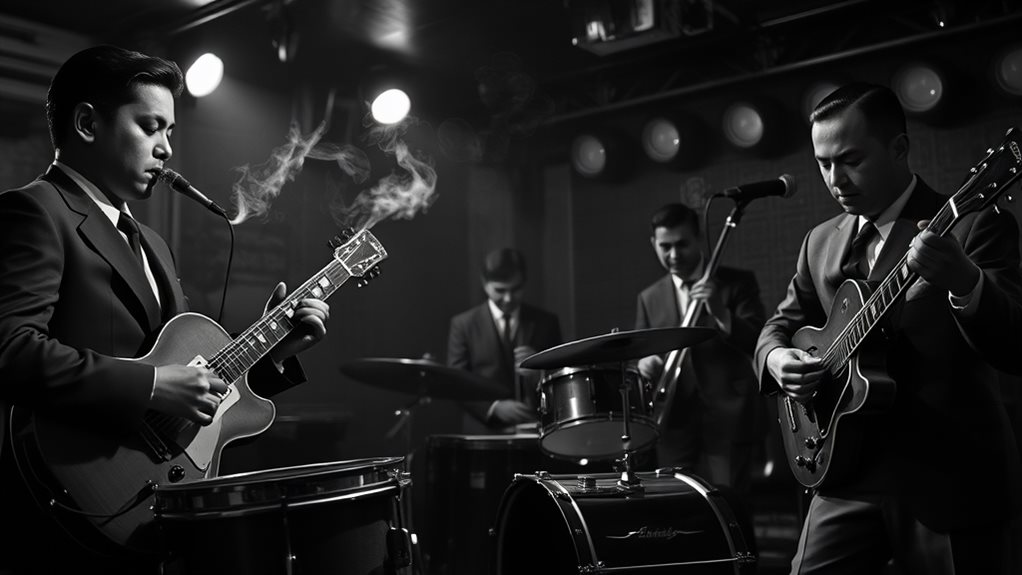
The Philippines' unique blend of jazz and local musical styles was a result of the country's early adoption of jazz during the American occupation. This blend of Afro-American styles with existing Hispano-Filipino musical traditions led to the creation of new fusion genres.
Pioneering musicians like Luis Borromeo integrated ragtime and foxtrot into Filipino tango-foxtrots, showcasing the adaptability of local dance styles to jazz's rhythmic patterns. Examples of these early fusion genres include the "himno one-step" and "Filipino foxtrot."
Filipino folk music also significantly influenced the development of jazz in the Philippines. By combining folk elements with jazz harmonies and improvisational techniques, musicians like Angel Peña and Eddie Munji created a distinct sound.
Later artists like Ryan Cayabyab continued this tradition, further enriching the musical melting pot.
The theatrical forms of zarzuela and kundiman also impacted jazz compositions with their distinctive melodies and emotional depth. Local instruments, such as the kulintang and the rondalla, added unique timbres to jazz music, creating a recognizable Pinoy jazz sound.
This integration of Filipino elements with jazz fundamentals reshaped both jazz and Filipino musical traditions, creating new musical identities.
The interaction between jazz and Filipino musical traditions wasn't just additive; it was transformative. Rhythmic patterns became a key point of interaction between the two musical traditions, leading to the creation of new fusion genres.
New Musical Genre Creations
New Musical Genres Emerged in the Philippines in the 1920s.
The fusion of musical styles in the Philippines during the 1920s led to the creation of entirely new genres. This fusion was characterized by the blending of jazz with classical influences, resulting in the birth of hybrid genres.
Dance Styles Were Among the First to Emerge.
One of the earliest manifestations of this fusion was the emergence of dance styles like the "himno one-step," "Filipino foxtrot," and "Filipino tango-foxtrots." These styles combined jazz with classical influences and were popularized by Luis Borromeo through performances and recordings.
Borromeo's work captivated Manila's middle and upper classes, showcasing the appeal of these new styles.
Musical Fusion Extended to Vaudeville and Musical Theater.
Borromeo's innovative approach also extended to vaudeville and musical theater, combining vaudeville's energy with classical concert elements.
This integration of jazz into these forms seeded the development of uniquely Filipino musical theater. This fusion wasn't limited to dance; it represented a complete cultural shift.
Filipino Big Bands Gained International Recognition.
The rise of Filipino big bands significantly impacted the musical landscape. These ensembles, often led by figures like Federico Elizalde, gained international recognition by performing in Shanghai, London, and other major cities.
Their success can be attributed to three key factors:
- A diverse mix of Filipino, American, and international musicians.
- Performances in high-profile venues like international hotels and jazz cabarets.
- Successful popularization of jazz amongst both Western and Filipino audiences.
These Big Bands Reflected the Innovative Spirit of Filipino Musicians.
The creation of these hybrid genres reflects not simply the adoption of jazz, but its transformative integration into the Filipino musical identity.
The innovative spirit of Filipino musicians was showcased through the emergence of local jazz scenes and the success of big bands like those led by Elizalde.
Incorporating Local Musical Elements
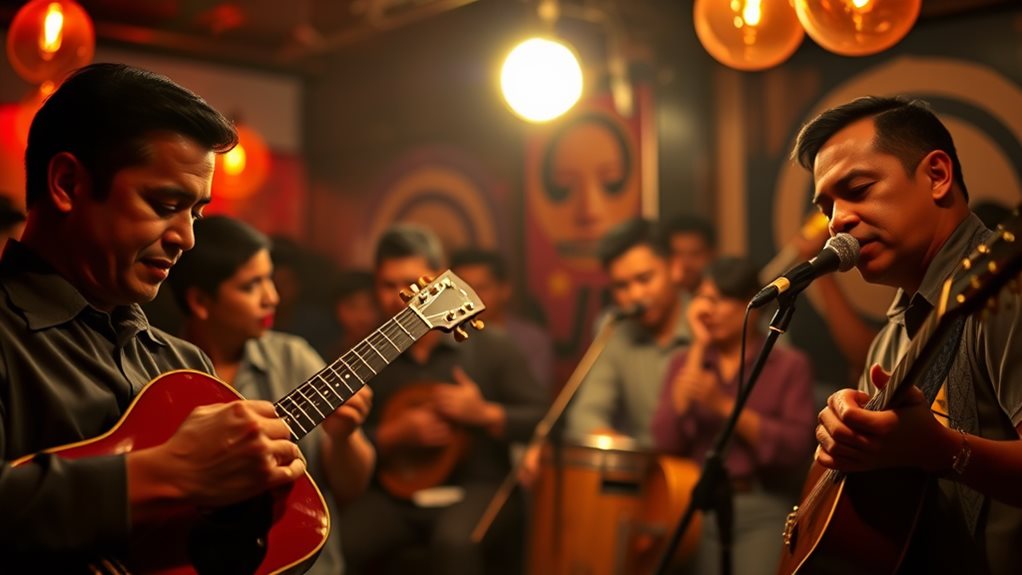
The integration of Filipino musical elements into jazz was facilitated by several key factors.
The blending of Filipino folk music with jazz resulted in a vibrant musical fusion. Traditional Filipino instruments, such as the rondalla, were incorporated into jazz performances, adding a unique local flavor. For example, jazz dances like the foxtrot and tango were adapted to include Filipino dance styles, resulting in unique hybrids such as the "himno one-step" and "Filipino tango-foxtrots."
Tagalog lyrics and themes became prevalent, connecting with audiences on a deeper level and making the music more accessible.
The Spanish colonial legacy played a significant role in shaping Filipino jazz. Classical music traditions, introduced during this era, influenced the evolving Filipino jazz sound.
Composers like Francisco Santiago and Jose Estella demonstrated this fusion, expertly weaving classical elements into their jazz compositions. American jazz standards were also adapted and evolved with local twists.
The fusion of jazz with other theatrical forms and international collaborations enriched the musical landscape. Vaudeville and variety shows, popularized by figures like Luis Borromeo, blended jazz with other forms of entertainment.
Recording companies like Parlophone disseminated this unique musical fusion, while international collaborations with musicians such as Benny Goodman and Buck Clayton showcased the diverse influences shaping Filipino jazz.
Zarzuela's Influence on Jazz
Zarzuela's Impact on Filipino Jazz****
Zarzuela, a 17th-century Spanish art form, significantly influenced the development of Filipino jazz. Its influence was indirect, creating a musical environment that allowed jazz to flourish. Filipino musical theater, shaped by zarzuela, became a fertile ground for the adaptation of jazz.
Key Ways Zarzuela Influenced Filipino Jazz
- Zarzuela's blend of musical styles paved the way for jazz fusion. Filipino composers naturally incorporated jazz improvisations into existing zarzuela structures. This blending of styles was evident in the works of Filipino musicians, who seamlessly combined jazz with traditional and Western music.
- Zarzuela's rhythmic and melodic complexities laid the groundwork for jazz. The familiarity with sophisticated musical arrangements made it easier for Filipino jazz musicians to assimilate jazz's harmonic and rhythmic subtleties. For example, Filipino jazz musicians often incorporated complex time signatures and polyrhythms into their music.
- Zarzuela's use of spoken dialogue and musical numbers influenced Filipino jazz vocal styles. The interplay between singing and speaking in zarzuela created a unique stylistic blend that was later adopted in Filipino jazz. This blend can be heard in the vocal styles of Filipino jazz musicians, who often incorporated spoken word and scat singing into their performances.
Conclusion
While zarzuela didn't directly influence Filipino jazz, its pre-existing framework and techniques significantly prepared the ground for the flourishing of Filipino jazz fusion. The blending of musical styles, rhythmic complexities, and unique vocal styles in zarzuela created a musical environment that allowed Filipino jazz to thrive.
Legacy of Filipino Jazz
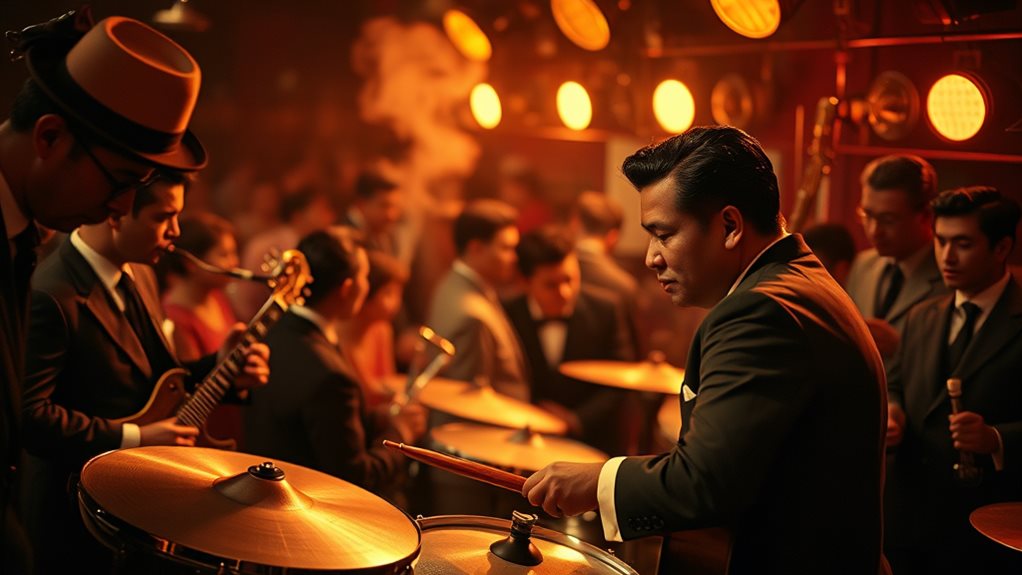
Filipino jazz has a rich history that extends beyond its origins during the American occupation**. The genre's evolution is characterized by a unique blend of ragtime, Filipino folk elements, and dance genres like the "himno one-step." This fusion is evident in the works of pioneers like Luis Borromeo**, also known as the "King of Jazz," and his contemporaries, such as Angel Peña and Bert del Rosario.
One notable example of this fusion is Luis Borromeo's song "Jazzy Jazzy Sound in Old Chinatown". This composition showcases Borromeo's innovative approach to combining different musical styles. This blending of styles wasn't unique to the Philippines.
Filipino jazz musicians significantly contributed to the spread of jazz throughout Asia. For instance, they collaborated with international artists and dominated the Shanghai scene. Additionally, Federico Elizalde's success in Britain further solidified the global impact of Filipino jazz.
Collaborations between Filipino musicians and international artists, including African American musicians like Teddy Weatherford, enriched the Filipino sound and resulted in a vibrant cross-cultural musical dialogue****. This dialogue is evident in the diverse musical styles that emerged during this period.
In the Philippines, Manila's jazz clubs and venues, particularly in Escolta, fostered a thriving local scene. These spaces catered to diverse audiences and facilitated the dissemination of "Filipino Dance Records." This local infrastructure played a vital role in the preservation and propagation of Filipino jazz.
The genre's resurgence in the late 1990s, marked by the integration of Filipino folk music into jazz by artists like Ryan Cayabyab, demonstrates its enduring appeal and continued evolution****. This evolution is evident in the lasting influence of Filipino jazz on modern pop music across Asia.
The creative legacy of Filipino jazz musicians can be seen in the diverse musical styles that have emerged in the region.
Spreading Jazz Across Southeast Asia
Filipino musicians played a significant role in spreading jazz across Southeast Asia. They weren't just passive participants in the local jazz scene but actively contributed to its growth and dissemination throughout the region.
Manila, with its international hotels and cabarets, was a crucial launching pad for these musicians. From there, they traveled to other major cities like Shanghai, Hong Kong, and Tokyo****, carrying with them their unique jazz adaptations.
Filipino musicians forged their own path in jazz by:
- Blending Western jazz with local musical elements, creating a distinct Southeast Asian sound.
- Collaborating with musicians from diverse backgrounds, including African Americans, resulting in a rich cross-cultural musical fusion.
- Adapting their performances to suit local tastes, ensuring a wide appeal and fostering local adoption and adaptation of the genre.
The impact of these collaborations was significant, shaping the musical landscapes of numerous Southeast Asian cities.
Although the mass exodus from Shanghai in 1949 disrupted the vibrant jazz scene, the seeds of Filipino jazz had already taken root, leaving a lasting legacy in the region's musical heritage.
Jazz's Lasting Influence on Music
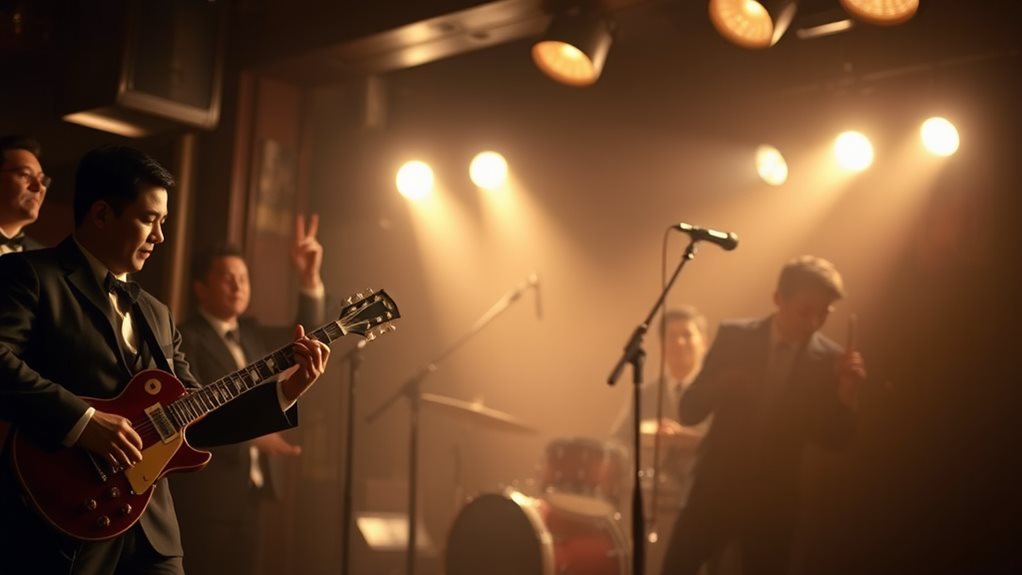
Jazz has had a lasting impact on the Philippines' music scene. This influence can be seen in the integration of jazz with local music genres, creating unique fusion styles. One such example is the "himno one-step" and "Filipino tango-foxtrots," which blended jazz elements with Filipino folk music.
Even classical composers, like Francisco Santiago and Jose Estella, incorporated jazz into their works.
The rise of jazz cabarets and nightclubs in Manila and Cebu contributed to the development of a distinct Filipino jazz scene. This scene led to the growth of Filipino jazz bands that performed internationally, showcasing their unique blend of styles.
The Manila Sound, a genre that mixed local languages with Western musical styles, is one example of jazz's impact on popular music. Another example is the fusion of folk music and various cultural influences within Filipino rock.
Jazz's adaptability and fusion with local music styles have fundamentally changed the texture of Filipino music. Artists like Sharon Cuneta and Freddie Aguilar exemplify this diverse musical landscape shaped by jazz.
This cultural exchange has left a lasting impact on the identity and trajectory of Filipino music.
Questions and Answers
How Did World War II Affect Filipino Jazz?
World War II significantly impacted the Filipino jazz scene. Many jazz venues were forced to close due to the war, leading to a decline in live performances and opportunities for musicians to showcase their talents. The displacement of musicians, who either fled the country or were killed during the war, further weakened the music scene. Wartime performances were often restricted and censored, limiting the ability of jazz musicians to express themselves and improvise freely. Additionally, economic hardship caused by the war made it difficult for musicians to sustain themselves, and government censorship stifled the growth of jazz in the Philippines.
What Instruments Were Most Common in Filipino Jazz Bands?
Pianos, trumpets, clarinets, and saxophones were the staples of Filipino jazz bands. These instruments formed the core of most jazz ensembles in the Philippines. Trumpets, in particular, were known for their unique styles, often featuring complex phrasing and melodic patterns. Drums and other percussion instruments were also essential components, providing the rhythmic foundation and driving the music forward with intricate patterns and time signatures.
Were There Any Female Jazz Musicians in the Philippines?
Yes, there were prominent female jazz musicians in the Philippines. Female musicians have significantly impacted Philippine jazz history. One notable example is Katy de la Cruz, a renowned jazz vocalist who made a lasting impression on the country's jazz scene.
How Did Filipino Jazz Influence Other Genres?
Filipino jazz has significantly influenced other genres by infusing improvisation techniques into various styles of music. This fusion resulted in the creation of unique sounds, such as jazz-rock and classical-jazz. For instance, Filipino musicians incorporated jazz techniques into traditional zarzuela, a form of Spanish-influenced musical theater, creating a new and distinct sound. Jazz fusion broadened the appeal and development of various genres by allowing for experimentation and innovation.
Did Filipino Jazz Face Censorship?
Filipino jazz did not face direct censorship. There is no evidence of specific jazz regulations in the Philippines. The genre's association with Western influence, rather than nationalist movements, shaped its reception. This Western influence, however, did not directly lead to censorship.